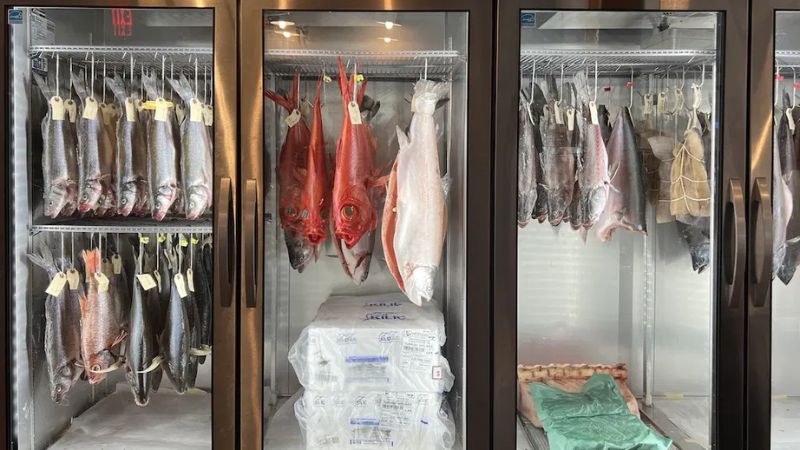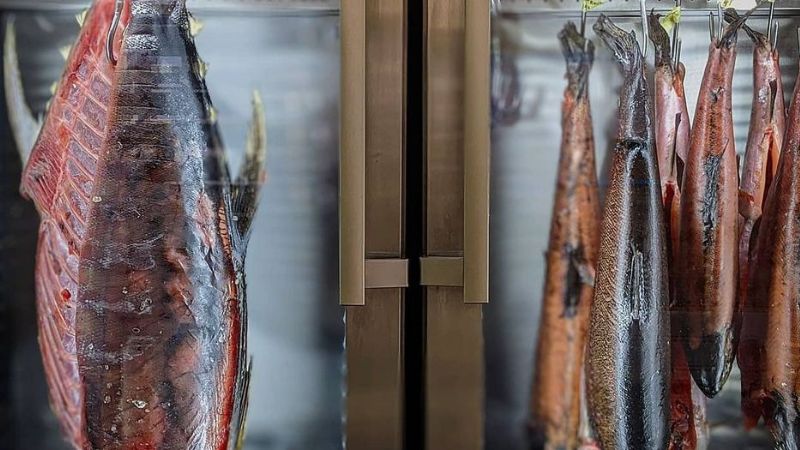Nowadays, food enthusiasts are willing to spend a small fortune on a unique type of fish, known as “fresh-aged fish,” with prices starting at VND 4 million per kilogram. Join us as we delve into the world of fresh-aged fish, uncovering its secrets and understanding why it has become a sought-after delicacy.
1 What is Fresh-Aged Fish?
Fresh-aged fish is a long-term preservation method that involves meticulously controlling moisture, temperature, and inhibiting bacterial and mold growth.
This age-old technique dates back to the Middle Ages when Europeans utilized caves and cellars for aging. Today, modern technology and techniques have enhanced the aging process while preserving its natural essence, all without the need for chemicals.
Mr. Ly Nhat Hieu, representative of Hang Duong Quan, employs a traditional aging method. He prepares and cleans the fresh fish and then ages it in a specialized refrigerator for one week at a temperature between 1-3 degrees Celsius.
At this temperature, the fish remains unfrozen, avoiding spoilage while retaining its distinctive flavor by preventing bacterial and mold intrusion. The aging duration depends on the fish’s weight: one-kilogram fish ages for five days, larger fish for seven days, and those between five and ten kilograms for ten to fifteen days.
 What is Fresh-Aged Fish?
What is Fresh-Aged Fish?
2 How Much Does Fresh-Aged Fish Cost per Kilogram?
Various fish species are commonly used for fresh-aging, including red grouper, yellowtail snapper, sturgeon, and conger pike, to name a few. Prices can range from VND 1 million to VND 4 million per kilogram, and for certain expensive fish, the aging process can significantly increase the price.
 Fresh-Aged Fish Price per Kilogram
Fresh-Aged Fish Price per Kilogram
3 Consumer Reviews of Fresh-Aged Fish
Mr. Nguyen Trong Hung, a resident of District 10, shared his experience with fresh-aged red grouper, describing its sweet and fresh taste, firm and fatty meat, and absence of fishy odor.
Veteran chefs in Ho Chi Minh City attribute the enhanced flavor of fresh-aged fish to the transformation of enzymes into a natural sweetener called umani, and the presence of anaerobic microorganisms such as E. coli and Clostridium perfringens, which fall within the permissible limits of TCVN 5289:2006. This delicacy can be prepared in a variety of ways, including frying, grilling, sashimi, hot pot, and salad.
 Consumer Reviews of Fresh-Aged Fish
Consumer Reviews of Fresh-Aged Fish
We hope you enjoyed learning about fresh-aged fish, a technique that ensures both safety and delicious flavors for discerning diners.

































